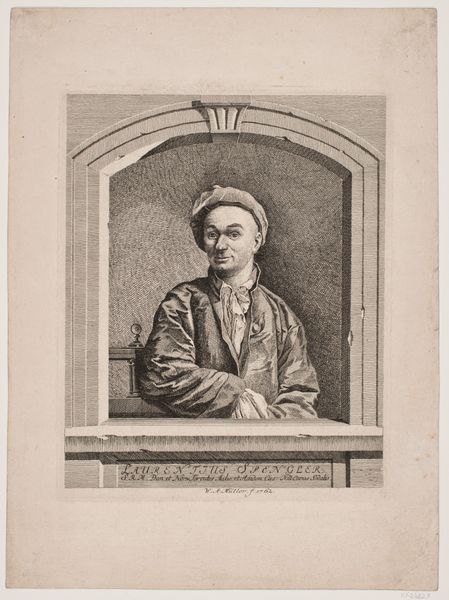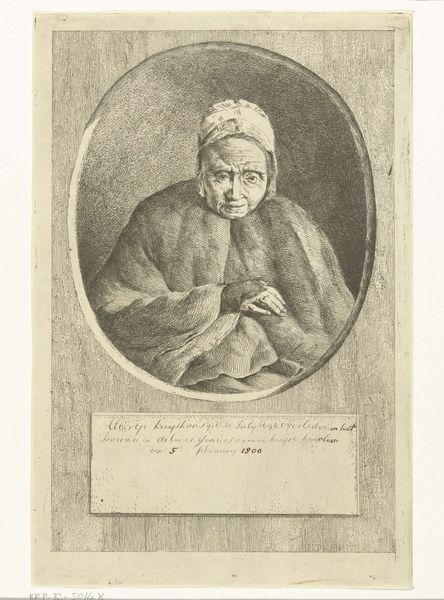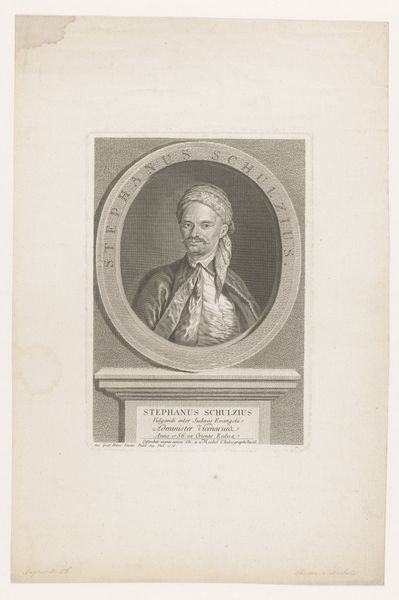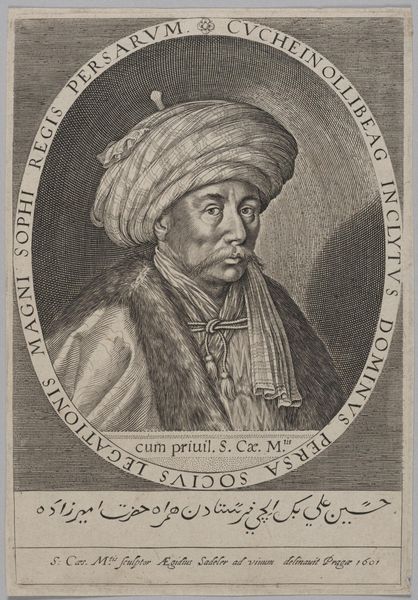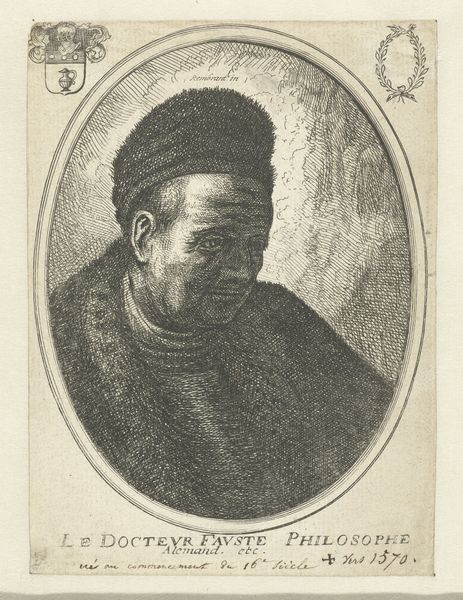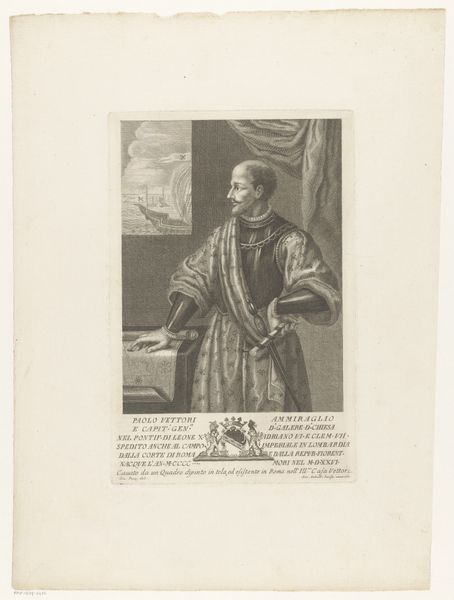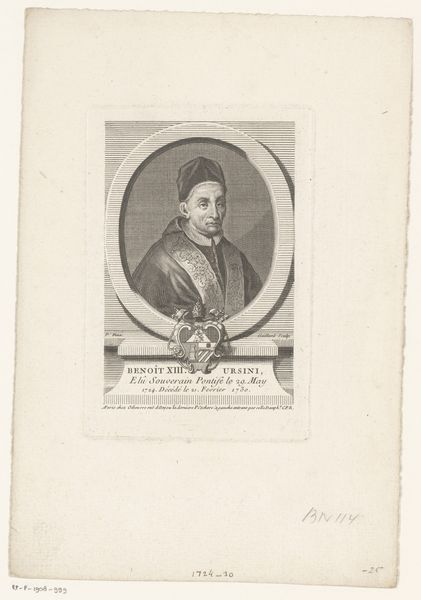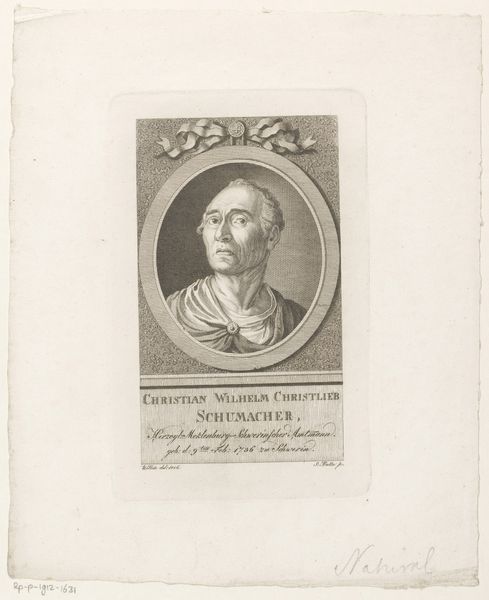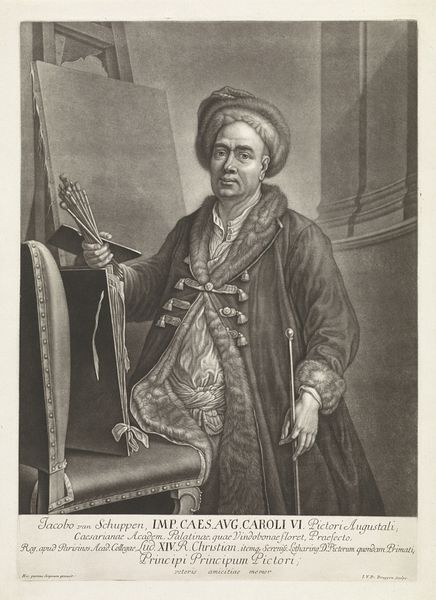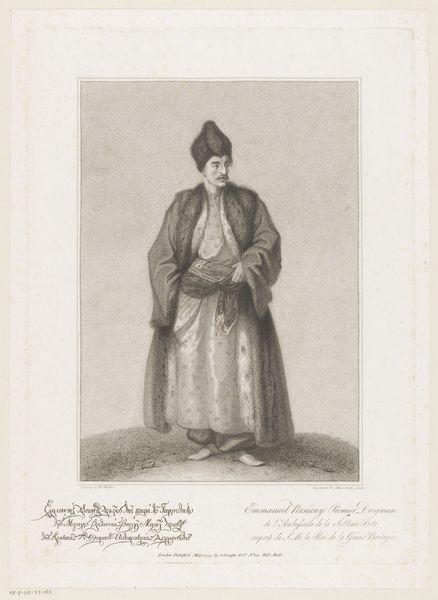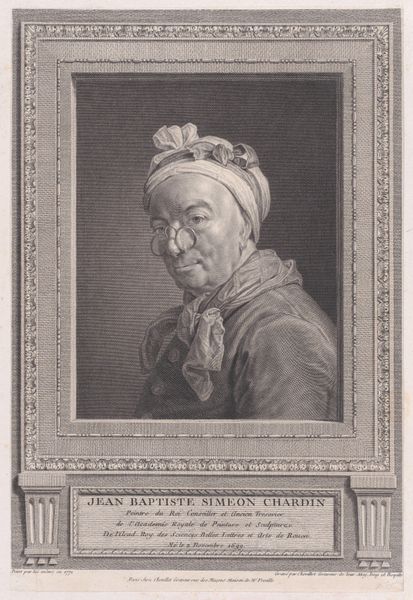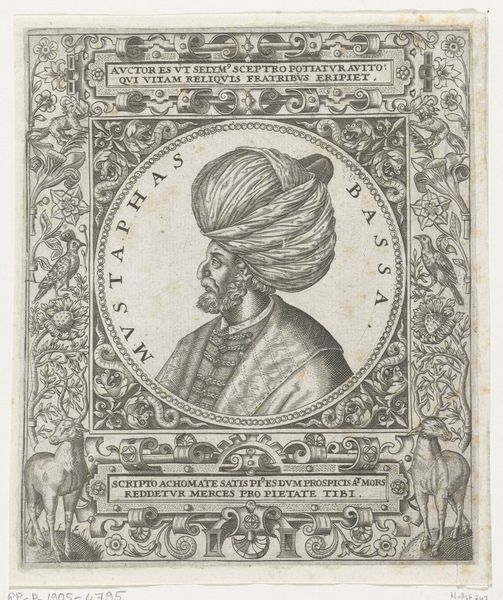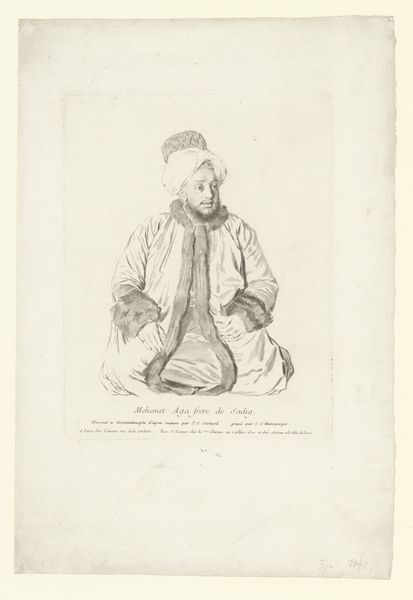
Dimensions: 241 mm (height) x 194 mm (width) (plademaal)
Curator: Immediately, I'm struck by the sense of watchful introspection in this piece. It has a subtle charm. Editor: Indeed. What we're viewing here is an engraving titled "Lorentz Spengler," created in 1762 by W.A. Müller. Spengler was, according to the inscription below, a "Mechanician to the Royal Court of Denmark and Norway." This print resides here at the SMK, Statens Museum for Kunst. Curator: Court Mechanician, eh? The composition certainly gives him a thoughtful air—poised at the window, caught between inside and outside. One hand over the other makes him seem reserved, maybe even burdened, even though the cap feels jaunty! The execution of that velvet robe and jaunty cap... quite remarkable given it's a print. Editor: Exactly! It is worth noting the historical context. Baroque portraiture, even in print, served a vital function. Images like these were how individuals achieved and maintained status, and contributed to creating the very concept of "celebrity," as it trickled down into printed material. Curator: Hmmm... so he's managing his brand! Though I have to wonder about that rather... theatrical window frame. It seems like he's a bit like a marionette in a show for the elite. The detail is incredible in the crosshatching, although I confess I wish there were fewer of these harsh, fine lines on his brow. The hat looks heavy and his expression unyielding! Editor: A valid interpretation. Prints like this had a wider distribution and reach. Therefore, the public role of figures like Spengler had more potential to become embedded into public discourse as compared to paintings available only to the few that would have a first person encounter with the object. In fact, his self-designated status as 'Archyta Farentinus III' gives me reason to wonder at his attempts to embed his 'brand' of status in perpetuity! Curator: Well, I suppose we're both trapped between art history and our immediate impression then! I'm going to take the bold stroke and embrace this Spengler's intensity of presentation as something brave: an invitation to connect, maybe even across time. What do you take away from the work overall? Editor: For me, it highlights how portraiture could straddle self-fashioning and documentation. The window isn't just a backdrop, but perhaps symbolizes Spengler's place at a crucial historical pivot in both artistic production and political ideology. Fascinating!
Comments
No comments
Be the first to comment and join the conversation on the ultimate creative platform.
